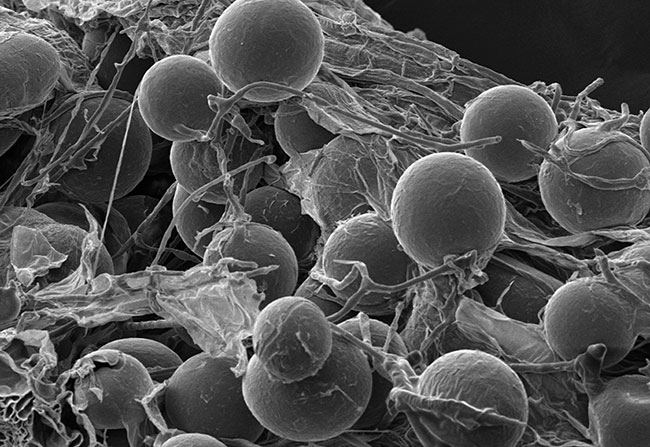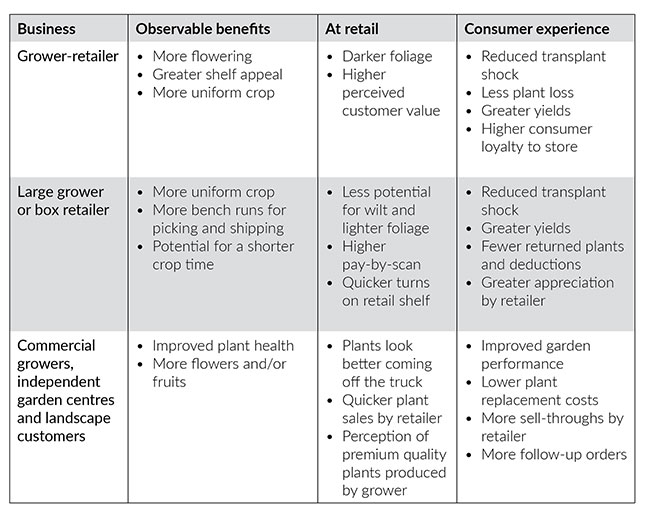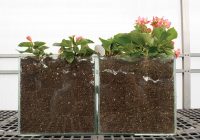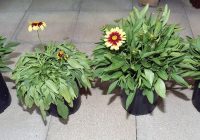
Features
Biocontrols
Crop Protection
Flowers
Mycorrhizae use: Does it make sense for you?
Mycorrhizae have been researched for hundreds of years and the science is well-known. The key is learning how to best incorporate them into production.
March 30, 2021 By Blair Busenbark
 Most fungicides can be used in tandem with mycorrhizae without negative impacts. All images: Mycorrhizal applications
Most fungicides can be used in tandem with mycorrhizae without negative impacts. All images: Mycorrhizal applications As the science of mycorrhizal fungi has become more widely known and well understood, most growers already know that mycorrhizae provide many benefits to plants. The question is, will it benefit your particular operation?
This article is designed to help decide if the use of mycorrhizae makes sense in your greenhouse, nursery, or landscape/turf operation. The short answer is, “It depends, but in most cases, yes.” For the long answer, read the remainder of this article.
What do mycorrhizae do?
Let’s first review the science. Mycorrhizal fungi have existed since the first plants appeared on dry land over 450 million years ago. They are naturally occurring biological organisms that form symbiotic relationships with almost 95 per cent of all plants.
What is the value that mycorrhizae offer to plants? Simply put, mycorrhizae can help expand the root absorptive area of the plant by up to 50 times. This is accomplished by developing a mycorrhizal hyphae network in the growing medium. Each of these hyphae can extend up to 50 to 60 centimetres in the soil beyond its attachment to the root.
Aside from providing greater reach, hyphae can also do more.
Nutrient and water absorption occur along the entire length of the hyphae, as opposed to only the tip of a root or root hair of the plant. Hyphae can also take up minerals from both the soluble and insoluble pools within the rhizosphere, while roots and root hairs can only draw from the soluble nutrient pool. Finally, the rate of uptake is less limited for hyphae, leading to a greater inflow of water and nutrients when compared to a root hair.
In sum, plants form symbiotic relationships with mycorrhizae to develop a more reliable source of nutrients and water. This results in a plant that is better able to handle stressors such as drought, nutrient deficiency, heavy metal toxicity, transplant shock, as well as pest and disease pressure. This reduction in stress leads to better plant health overall. The plant can focus on its purpose; whether it is to flower, form fruits, or whatever is required to achieve a successful crop.
Types of mycorrhizae
Different horticultural plants can form symbiotic relationships with different mycorrhizae, if any. Here are different mycorrhizae that you may come across:
Endomycorrhizae – Between 80 to 85 per cent of all plants are endomycorrhizal. This includes basically all greenhouse plants, and most nursery and agronomic crops. The endo- modifier means the mycorrhizae penetrate the plant root cortical cell. Endomycorrhizal inoculant products are commercially available from several sources in Canada.
Ectomycorrhizae – Between five to 10 per cent of all plants are ectomycorrhizal, including conifers and select hardwood trees. Some are included in nursery production, landscaping, and Christmas tree production. The ecto- modifier means the mycorrhizae do not penetrate the plant root cortical cells but grow between the cells instead. Ectomycorrhizal inoculant products are commercially available from a more limited number of suppliers in Canada.
Ericoid Mycorrhizae – These specialized mycorrhizal species impact select members of the Ericaceae family of flowering plants. Azaleas, rhododendrons, Pieris, heath, and heather are some of the more popular greenhouse and nursery ericoid mycorrhizal plants. There are no commercial ericoid mycorrhizal inoculant products available in Canada or the U.S. European products have been trialled with no signs of improved results.
Orchid Mycorrhizae – Orchids have very specific mycorrhizal relationships with special fungal species that only impact specific members of the Orchidaceae family. The Orchis and Dactylorhiza genera only form relationships with this specialized orchid mycorrhizae. The other genera in the family can sometimes form relationships with endomycorrhizae. There are no commercial orchid mycorrhizal inoculants available in Canada.
Non-Mycorrhizal – This group makes up about five per cent of all plants. Members of this loosely organized group can either be variable in their relationship with mycorrhizae (i.e. they get no significant benefits from their mycorrhizal associations) or be highly resistant to forming a relationship with mycorrhizae. Some of these plants are what you would commonly associate as opportunistic weeds.
For more information on which plants are associated with which mycorrhizae, please refer to the Families and Genera document on the Mycorrhizal Applications website.
Application timing
As they say, “Timing is Everything”, and that is once again true for a grower or landscaper when it comes to mycorrhizal use.
With endomycorrhizae, the plant will begin to benefit three to four weeks after the initial mycorrhizal symbiotic relationship is formed. An active root needs to be present for the symbiotic relationship to be initiated by the plant. The clock starts once the plant root and the mycorrhizal propagule come in contact.
In another four weeks, or around eight weeks total, growers and landscapers will start to visually see the difference. Ectomycorrhizae are slower in forming their relationships. It can take up to six months in some ecto plants, which makes sense as most ecto plants are woody ornamentals.
For a grower to maximize their benefits, mycorrhizae should be applied during propagation. For growers who buy plugs and rooted cuttings, it is best to drench/dip the plugs/liners with mycorrhizae before you plant them in their finished containers. An additional benefit of this strategy is, the smaller the soil volume, the smaller the quantity of mycorrhizae needed for treatment. This translates into lower costs for treating each plant and a greater return on the input investment.

For most of us, we are often on a quest to get the best value for the dollars we spend. It could be the best house for a certain price point, or simply the best lunch for the amount you want to spend. This same quest for value occurs in plants and their interest in forming relationships with mycorrhizae.
In a natural setting, plants can form mycorrhizal relationships with a variety of mycorrhizal species and at the same time. Why? To maximize the value provided by the mycorrhizae species in return for the amount of sugars and lipids offered by the plants.
Each species of mycorrhizae offers different functional benefits. If a grower or landscaper uses a product that only has one species, this single species of mycorrhizae can only offer the benefits that the single species can provide. In order to maximize the value of mycorrhizae to a plant, it is best to use mycorrhizal products that contain multiple mycorrhizal species to ensure the largest possible array of functional benefits to the plant.
Now that we have covered the science of mycorrhizae, let’s now move to the next question: Does it make sense for your operation?
The benefits of mycorrhizae usage vary depending on the type of grower/landscaper you are. The table above should be helpful in explaining the benefits for your type of business.
In general, plants will start to benefit from a mycorrhizal application after four weeks, improving their ability to handle different stressors. Growers and landscapers will start to see observable benefits about eight weeks after application. At retail, plants will look better in appearance and have greater sales potential. The end consumers will have greater success in their gardens, leading to their return.
Hopefully this article has helped you better decide if the use of mycorrhizae makes sense in your operation.
Blair Busenbark is the Northeast & Mid-Atlantic sales account manager at Mycorrhizal Applications. Questions? Contact inquiries@mycorrhizae.com
Print this page


